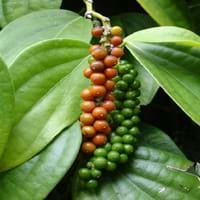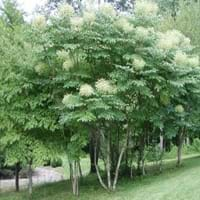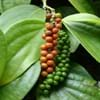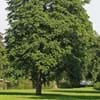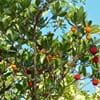Life Span
Perennial
Perennial
Type
Broadleaf Evergreen, Vines
Tree
Origin
India, Indonesia, Southeast Asia, Southern Asia
Mid-Atlantic United States, Southeastern United States, South-Central United States, Texas
Types
Red pepper, Orange pepper
Not Available
Number of Varieties
Not Available
Habitat
Moist Soils, orchards, Temperate Regions
Dappled Shade, Shady Edge, Woodland Garden Secondary
USDA Hardiness Zone
8-15
4-9
Sunset Zone
H1, H2, 8, 9, 14, 15, 16, 17, 18, 19, 20, 21, 22, 23, 24
3a, 3b, 4, 5, 6, 7, 8, 9, 14, 15, 16, 17, 18, 19, 20, 21, 22, 23, 24
Habit
Clump-Forming
Thicket/Colonizing
Minimum Width
Not Available
Flower Color
Lemon yellow
White, Green, Ivory
Flower Color Modifier
Bicolor
Bicolor
Fruit Color
Red, Green, Light Green
Purple, Black
Leaf Color in Spring
Light Green, Dark Green
Green, Blue Green, Dark Green
Leaf Color in Summer
Light Green
Green, Blue Green, Dark Green
Leaf Color in Fall
Light Green, Dark Green
Yellow, Green, Purple, Blue Green, Dark Green, Yellow green
Leaf Color in Winter
Light Green, Dark Green
Not Available
Leaf Shape
Circular cordate
bipinnate
Plant Season
Spring, Summer, Fall, Winter
Spring, Summer, Fall, Winter
Sunlight
Full Sun, Partial Sun, Partial shade
Full Sun, Partial Sun
Type of Soil
Loam, Sand
Clay, Loam, Sand
The pH of Soil
Acidic, Neutral, Alkaline
Acidic, Neutral, Alkaline
Soil Drainage
Average
Well drained
Bloom Time
Not Available
Summer
Tolerances
Drought
Pollution, Soil Compaction
Where to Plant?
Container, Ground
Ground
How to Plant?
Seedlings, Stem Planting, Vegetative Reproduction
Cuttings, Divison, Seedlings
Plant Maintenance
Medium
Medium
Watering Requirements
Do Not over Water, Sprinkle water over foliage, Water every two or three days during warmer months
Needs high amount of water
In Summer
Lots of watering
Lots of watering
In Spring
Moderate
Moderate
In Winter
Average Water
Average Water
Soil pH
Acidic, Neutral, Alkaline
Acidic, Neutral, Alkaline
Soil Type
Loam, Sand
Clay, Loam, Sand
Soil Drainage Capacity
Average
Well drained
Sun Exposure
Full Sun, Partial Sun, Partial shade
Full Sun, Partial Sun
Pruning
A hard prune may be necessary if the plant becomes woody, Remove dead branches, Trim each shoot back to the first set of leaves
Remove damaged leaves, Remove dead branches, Remove dead leaves
Fertilizers
10-10-10 diluted liquid fertilizer, All-Purpose Liquid Fertilizer, Do not let fertilizers touch the leaves
All-Purpose Liquid Fertilizer
Pests and Diseases
Aphids, Beetles, Root rot, Rust, Scab
Aphids, Leaf spot, Mealybugs
Plant Tolerance
Heat Tolerance, Humidity, Salt and Soil Compaction
Drought
Flowers
Not Available
Showy
Flower Petal Number
Single
Single
Foliage Texture
Medium
Coarse
Foliage Sheen
Matte
Matte
Attracts
Aphids, Leafminer, Snails, Squirrels
Bees, Butterflies, Insects, Not Available
Allergy
Oral Allergy
Skin irritation
Aesthetic Uses
Beautification, Cottage Garden, Decorating walls
Borders, Woodland margins
Beauty Benefits
Acne, Blackheads
Not Available
Environmental Uses
Fixes Nitrogen, Insect Repellent
Air purification
Medicinal Uses
Acid Reflux, Dysentry, Healthy teeth, Inflammation, Oral health
Alterative, Analgesic, Diaphoretic, Opthalmic
Part of Plant Used
Dried seeds
Bark, Leaves, Root
Other Uses
Culinary use, Oil is used for aromatherapy, Used in herbal medicines
Used as a potherb
Used As Indoor Plant
Yes
No
Used As Outdoor Plant
Yes
Yes
Garden Design
Container, Feature Plant, Hedges, Screening / Wind Break, Tropical
Feature Plant, Foundation, Mixed Border
Botanical Name
Piper nigrum
ARALIA spinosa
Common Name
Peppercorn, Piper, Black pepper
American Angelica Tree, Devil's Walking Stick, Hercules' Club
In Hindi
काली मिर्च
Devil's Walking Stick
In German
Pfeffer
Teufelsspazierstock
In French
Piper nigrum
Walking bâton du diable
In Spanish
Poivrier noir
Bastón del Diablo
In Greek
μαύρο πιπέρι
Περπάτημα Stick διαβόλου
In Portuguese
Pimenta-preta
Vara andando de diabo
In Polish
Pieprz czarny
Diabelski laska
In Latin
nigrum piperis
Virgam diaboli
Phylum
Magnoliophyta
Magnoliophyta
Class
Magnoliopsida
Magnoliopsida
Family
Piperaceae
Araliaceae
Clade
Angiosperms, Monocots
Angiosperms, Asterids, Eudicots
Tribe
Not Available
Not Available
Subfamily
Not Available
Aralioideae
Number of Species
Not Available
Not Available
Importance of Black pepper and Devil's Walking Stick
Want to have the most appropriate plant for your garden? You might want to know the importance of Black pepper and Devil's Walking Stick. Basically, these two plants vary in many aspects. Compare Black pepper and Devil's Walking Stick as they differ in many characteristics such as their life, care, benefits, facts, etc. Every gardener must at least have the slightest clue about the plants he wants to plant in his garden. Compare their benefits, which differ in many ways like facts and uses. The medicinal use of Black pepper is Acid Reflux, Dysentry, Healthy teeth, Inflammation and Oral health whereas of Devil's Walking Stick is Alterative, Analgesic, Diaphoretic and Opthalmic. Black pepper has beauty benefits as follows: Acne and Blackheads while Devil's Walking Stick has beauty benefits as follows: Acne and Blackheads.
Compare Facts of Black pepper vs Devil's Walking Stick
How to choose the best garden plant for your garden depending upon its facts? Here garden plant comparison will help you to solve this query. Compare the facts of Black pepper vs Devil's Walking Stick and know which one to choose. As garden plants have benefits and other uses, allergy is also a major drawback of plants for some people. Allergic reactions of Black pepper are Oral Allergy whereas of Devil's Walking Stick have Skin irritation respectively. Having a fruit bearing plant in your garden can be a plus point of your garden. Black pepper has no showy fruits and Devil's Walking Stick has showy fruits. Also Black pepper is not flowering and Devil's Walking Stick is not flowering . You can compare Black pepper and Devil's Walking Stick facts and facts of other plants too.
